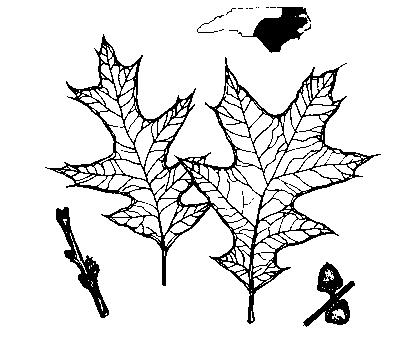|
Cherrybark
Oak
(Quercus
pagoda Raf)
|
|
| |
 |
|
| |
Cherrybark
oak also is known as swamp red oak, swamp Spanish oak or bottornland
oak. The cherrybark oak is widely distributed on the best sites
in first bottoms and on well-drained terraces and alluvial sites
of the Coastal Plain and lower Piedmont. It seldom is found on
wet or swampy soils.
The tree can become much larger and better formed than the Southern
red oak and often reaches heights of 100 to 130 feet and 3 to
5 feet in diameter.
The leaves have shallow sinuses between the five to 11 lobes,
which are 5 to 7 inches long, and 3 1/2 to 4 inches wide. They
are more pointed at the base and whiter beneath than those of
the Southern red oak.
The dark gray or blackish, scaly mature bark somewhat resembles
that of the wild black cherry and is responsible for the tree's
common name of cherrybark oak. The flowers appear in April while
the leaves are unfolding.
The fruit ripens the second year. The small rounded acorn, about
1/2 inch long, is set in a thin saucer-shaped cup that tapers
to a short stem.
The wood is heavy, hard, strong, coarse-grained and is less subject
to defects than most other red oaks. Cherrybark oak probably is
the best timber oak along the rivers of the Coastal Plains. It
is used for lumber, veneer and furniture. |
|
|

